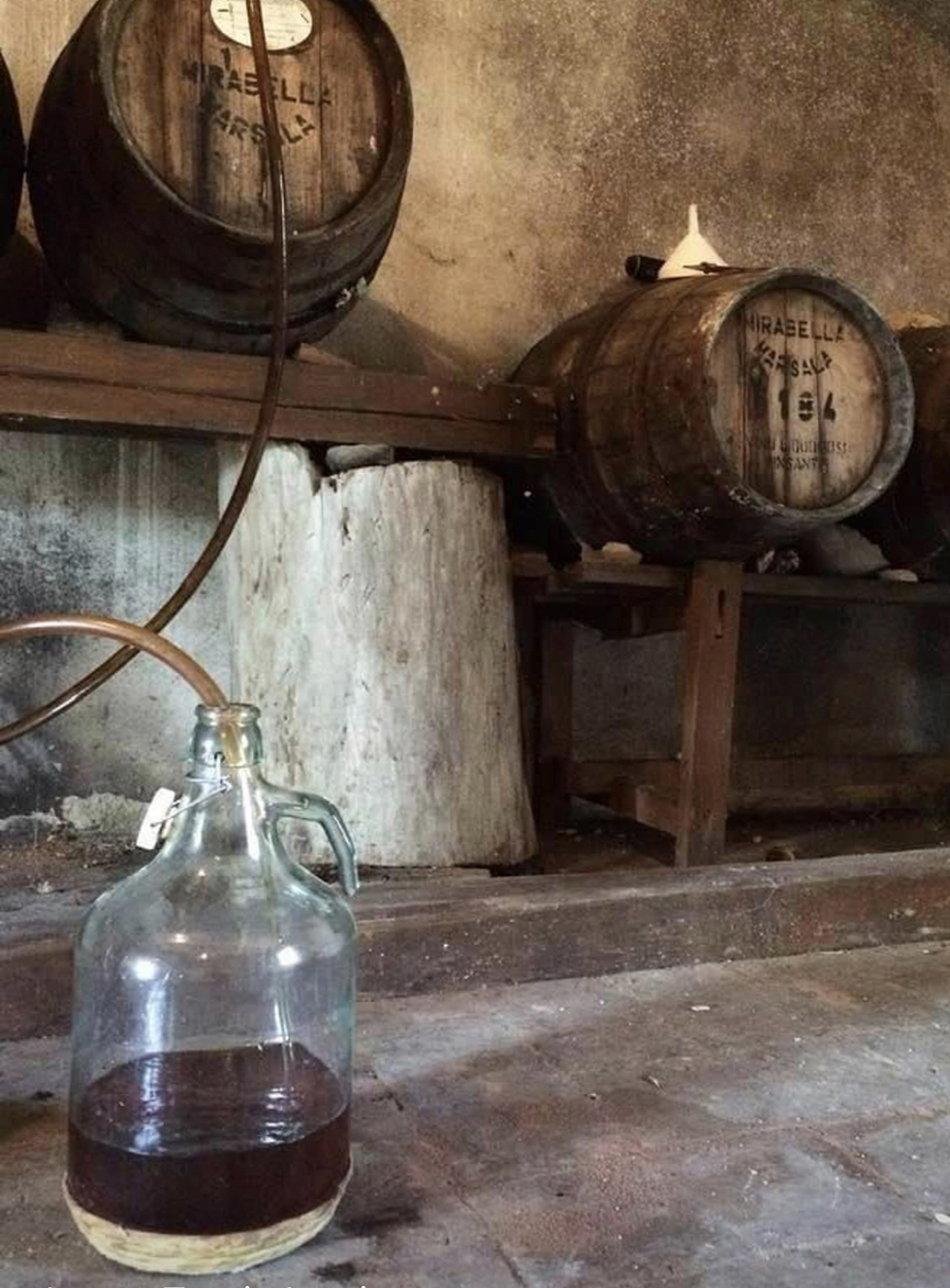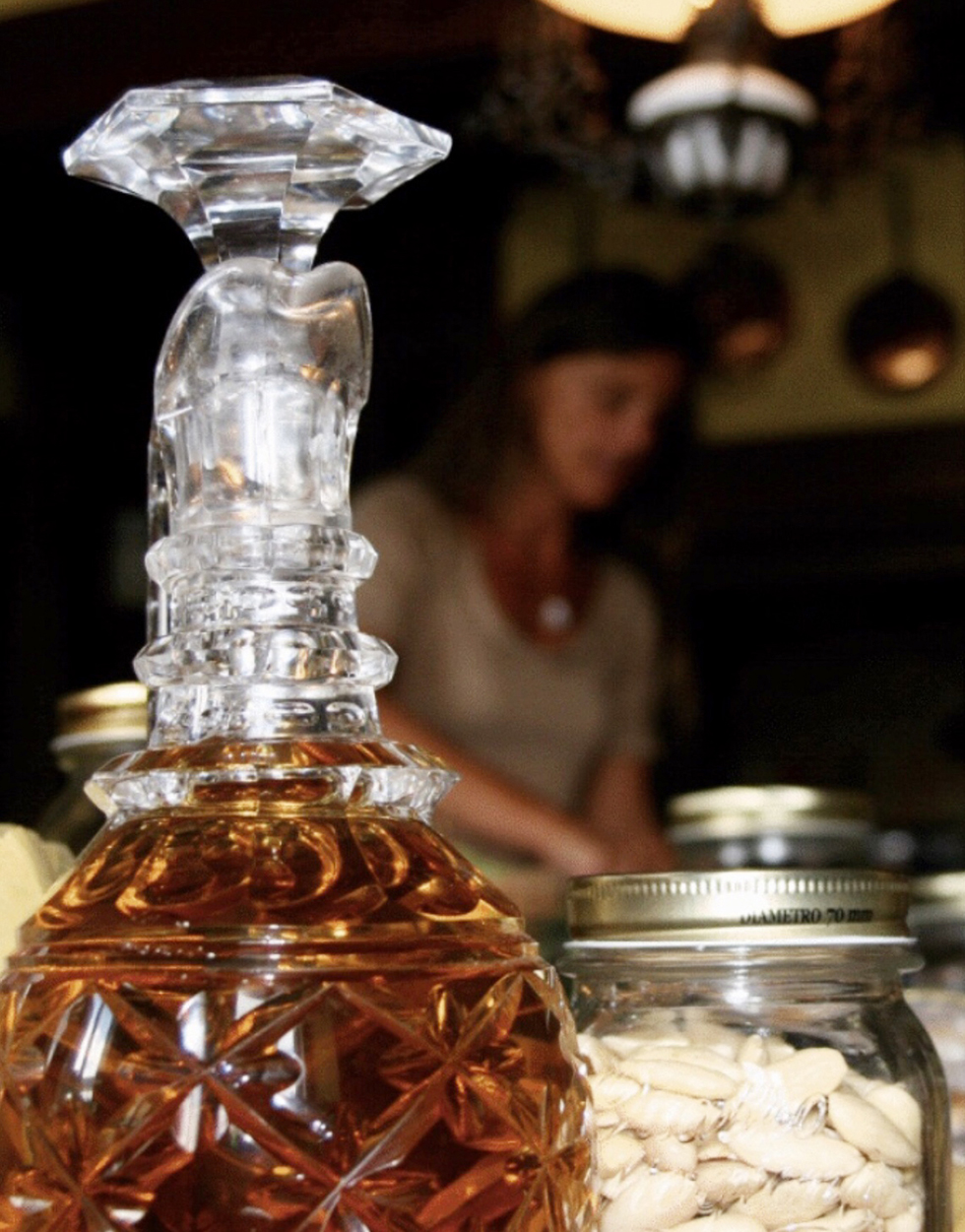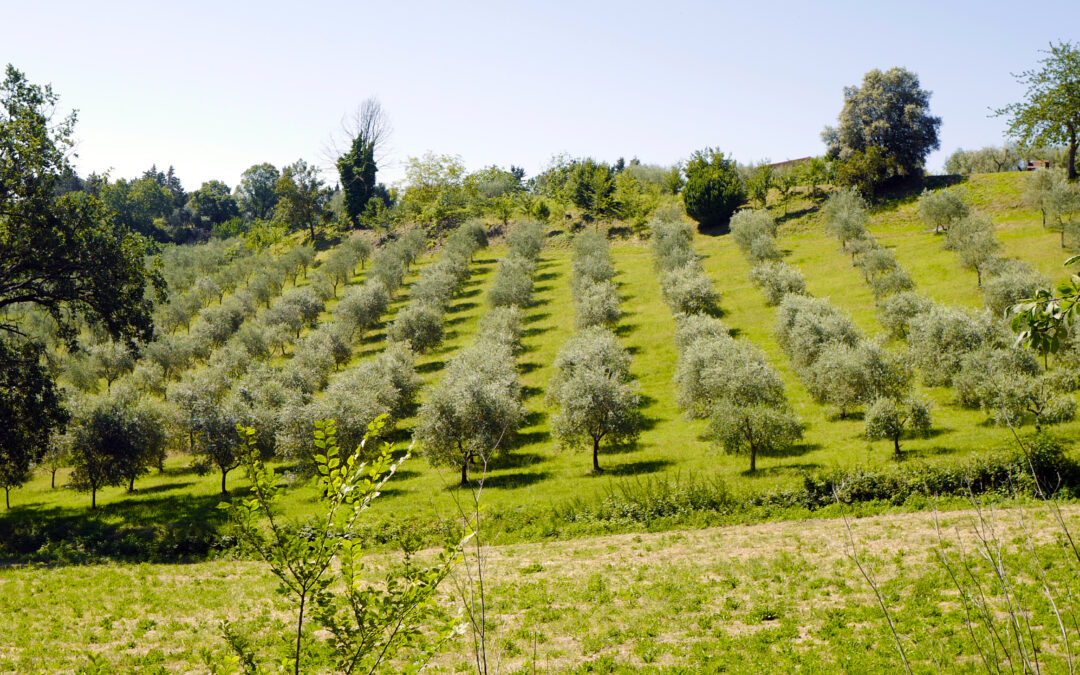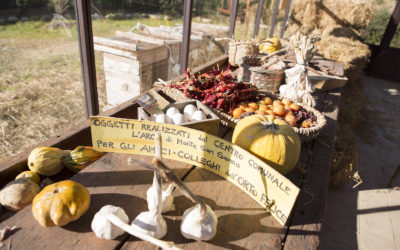VINSANTO
As you enter my mother’s home, there is a door on the right side of the entrance that is closed most of the time. Once unlocked you have access a to small room that houses some of the most jealously preserved Tozzi family memorabilia: antique furniture, monogrammed glasses, little portraits of my great-grandmother weaving, chairs with uneven legs that no longer stand up, and then the beautifully framed photographs from a distant time that highlight our family’s history. An elegant, perfectly shaped oval wooden table that my mom polishes weekly sits in the middle of the room. The residue of her favorite wax leaves the scent of a sacred place. A silver tray filled with tiny crystal glasses surrounds, like faithful servants, a triumphant bottle of an amber-colored wine—holy wine!
Vinsanto is a traditional Tuscan dessert drink, the wine of friendship and hospitality, the wine that priests serve during Mass. If you trace its origins, you’ll encounter stories sacred and profane.

Vinsanto is a traditional Tuscan dessert drink, the wine of friendship and hospitality.
In Siena, and only in Siena, we like to tell the story of a Franciscan monk who, in 1348, cured victims of the Black Plague with a sweet wine reputed to have miraculous healing powers—a “saint’s wine.” Legends aside, the actual production and spread of Vinsanto as we understand it today started in the nineteenth century, when many Tuscan farmers, in addition to serving dry wines daily, started to produce special sweet wines to be consumed during the holidays. Each producer had his own method and, even today, it would be impossible to standardize the way Vinsanto is made.
My brother Marco and my niece Martina, who reminds me of myself at a younger age, continue to make Vinsanto the way our father used to make it. Before the red wine vintage, Marco selects the best Trebbiano and white Malvasia grapes from the vineyards. He then carefully puts the grappoli over reed mats that we call cannicci. If two grappoli are connected by a vine, they can also age hanging from bamboo canes attached to the ceiling. What’s important is that the appassitoio, the room where the grapes are left to wither, is in a space with good air circulation in order to avoid mold formation. After a few months, normally in December, Marco presses the grapes and puts the must into wooden barrels called caratelli, which can be used for many years and are replaced only when they acquire odors that can damage the wine.

To make Vinsanto, my family traditionally uses the “mother,” the dark and dense sediment containing enzymes and yeasts that grow in the presence of sugar and are left to decant from one caratello to another. The barrels, two-thirds full and cemented at the top, are stored and aged in the cellar for at least three years. My father used to keep the Vinsanto’s barrels in our attic. It’s hard to forget the days he took me there with him, both of us holding torches to supervise the low-ceilinged, mysterious room under the beamed roof. Opening one of the barrels was always a major event, and for days after my family would talk endlessly about the new Vinsanto, comparing it to previous ones: Was it dryer or sweeter? Did it have more alcohol or less? Darker or lighter?
No Vinsanto ever tastes exactly the same; its flavor is a function of the passion and fantasy of the person who produces it. It is a wine that requires tremendous work and allows no shortcuts whatsoever. Vinsanto can’t be tied to profit. My brother doesn’t sell it, and he doesn’t like to share it with people who don’t appreciate the grueling work that goes into producing it. However, if you do appreciate his efforts and genuine dedication, you just might go home with a bottle of Vinsanto as a gift.

To make Vinsanto my family traditionally uses the ‘mother”,the dark and dense sediment containing enzymes and yeasts that grow in the presence of sugar and is left to decant from a caratello to another.The barrels, two third filled and top cemented, are stored in the aging cellar for at least three years.
My father used to keep the Vintanto’s barrels in the attic of our home.Hard to forget those days he will take me with him, with torches in our hands, to supervise the low-ceiling mysterious room under the beamed roof.The opening of one of the barrels was always an event and for days the family will talk about the new Vinsanto, comparing it with the old one; dryer or sweeter, more or less alcohol ,darker or lighter color.
Vinsanto never exactly tastes the same.It flavor goes with the passion and the fantasy of the person who produces it.It is a wine that requires a lot of work and doesn’t allow short cuts. Vinsanto can’t be tied to profit.My brother doesn’t sell it and he doesn’t like to share it with people who don’t understand the hard work behind its making.However if you appreciate his effort and genuine dedication you might go home with a bottle of Vinsanto as a gift.
No Vinsanto ever tastes the same; its flavor is a function of the passion and fantasy of the person who produces it.
To make Vinsanto, my family traditionally uses the “mother,” the dark and dense sediment containing enzymes and yeasts that grow in the presence of sugar and ARE left to decant from ONE “caratello” to another. The barrels, TWO-THIRDS FULL AND cemented at the top, IS “CEMENTED AT THE TOP” the right wording? are stored in the aging cellar for at least three years. My father used to keep the Vinsanto’s barrels in OUR attic.
IT’S hard to forget THE days he TOOK me with him, REMOVE “with” BOTH OF US HOLDING TORCHES OR TORCHES IN HAND TO SUPERVISE the LOW-CEILINGED, MYSTERIOUS room under the beamed roof. OPENING remove “The” one of the barrels was always a MAJOR event, and for days AFTER MY family WOULD talk ENDLESSLY about the new Vinsanto, comparing it TO previous ONES: Was it dryer or sweeter? Did it have more alcohol or less? Darker or lighter?
NO Vinsanto EVER TASTES EXACTLY THE SAME; ITS flavor IS A FUNCTION of the passion and fantasy of the person who produces it. It is a wine that requires TREMENDOUS work and ALLOWS NO short cuts WHATSOEVER. Vinsanto can’t be tied to profit. My brother doesn’t sell it, and he doesn’t like to share it with people who don’t APPRECIATE the GRUELING WORK THAT GOES INTO PRODUCING IT. However, if you appreciate his efforts and genuine dedication, you JUST might go home with a bottle of Vinsanto as a gift.





